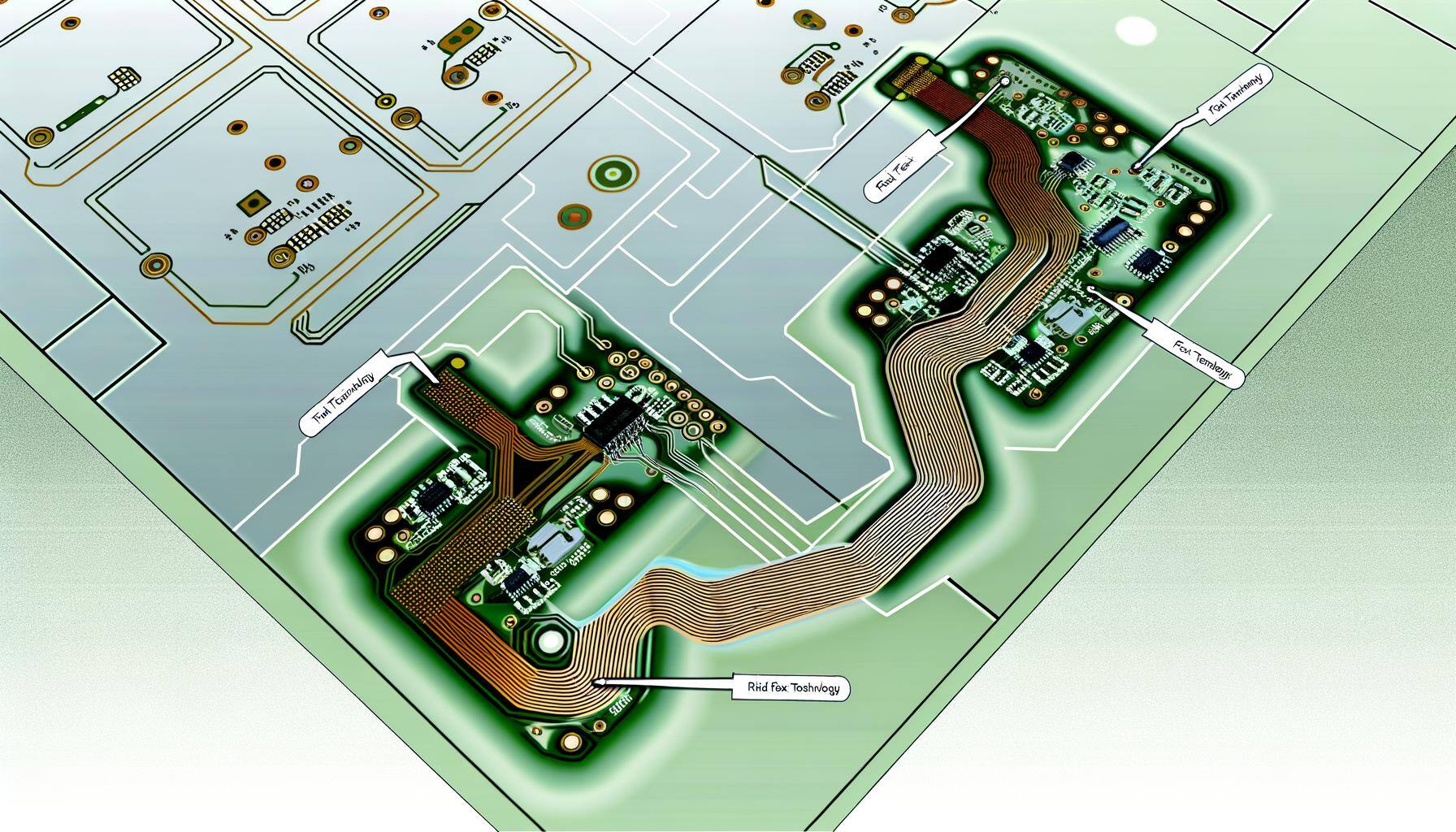
Decoding the Basics: What Are Flex and Rigid Flex PCBs?
In the dynamic world of electronics, the selection of the right printed circuit board (PCB) is pivotal to the success of any project. Two prominent technologies that have emerged are Flex and Rigid Flex PCBs, each offering unique benefits tailored to specific applications. Flex PCBs are crafted from flexible materials such as polyimide, allowing them to bend and conform to various shapes. This adaptability makes them ideal for devices where space is at a premium, such as smartphones and wearables.
On the other hand, Rigid Flex PCBs combine the best of both worlds by integrating flexible substrates with rigid sections. This hybrid design provides the flexibility needed for complex layouts while maintaining structural stability. Such a configuration is invaluable in applications that demand both durability and design versatility, such as in automotive and military sectors. Understanding these foundational differences is crucial for making informed decisions about which PCB type best suits your project needs.
The Unique Advantages of Flex PCBs
Flex PCBs bring a host of advantages to the table, particularly in the realm of modern electronics. One of their standout features is the ability to fit into tight, intricate spaces. This capability is indispensable in the creation of compact, lightweight devices like smartwatches and hearing aids, where traditional rigid boards would be cumbersome.
Moreover, Flex PCBs are renowned for their resilience. They can withstand repeated bending and mechanical stress, making them an optimal choice for products subject to frequent movement or vibration. Their lightweight construction contributes to reducing the overall weight of the end product, an essential factor in portable electronics. These characteristics make Flex PCBs a preferred choice in sectors such as consumer electronics and healthcare, where reliability and performance are paramount.
Understanding the Strengths of Rigid Flex PCBs
Rigid Flex PCBs are distinguished by their ability to offer both flexibility and structural integrity. This attribute makes them particularly advantageous in high-stress environments where electronic components must endure harsh conditions without compromising functionality. The rigid sections provide the necessary strength and support, while the flexible parts allow for innovative and complex designs.
These PCBs excel in applications such as aerospace and military industries, where reliability and durability cannot be compromised. Their robust construction ensures that they remain operational even under significant mechanical stress or temperature variations. The combination of flexibility and robustness makes Rigid Flex PCBs an attractive option for projects that demand both adaptability and resilience.
Key Considerations for Selecting the Right PCB Type
Choosing between Flex and Rigid Flex PCBs involves careful consideration of your project's specific requirements. If your design necessitates high flexibility and the capacity to fit into compact spaces, a Flex PCB might be the optimal choice. They are generally more cost-effective to produce and offer the adaptability needed for intricate designs.
Conversely, if your application demands a blend of flexible design and rigid support, Rigid Flex PCBs are worth considering. Although they may come with higher production costs and complexity, their unparalleled durability and stability are invaluable in high-stress environments. It's essential to weigh factors such as manufacturing complexity, cost implications, and the environmental conditions the PCB will face, as these can significantly impact your project's timeline and budget.
Industry Applications: Where Flex and Rigid Flex PCBs Shine
The versatility of Flex and Rigid Flex PCBs has led to their widespread adoption across a myriad of industries. In the realm of consumer electronics, Flex PCBs are the backbone of devices that prioritize compactness, lightweight construction, and flexibility. Products like smartphones and fitness trackers rely on these boards to achieve innovative designs without sacrificing functionality.
Meanwhile, Rigid Flex PCBs find their niche in more demanding applications. The aerospace industry, for instance, relies on these boards for their ability to withstand extreme conditions while maintaining high performance. Similarly, in the automotive and military sectors, the combination of flexibility and robustness provided by Rigid Flex PCBs ensures reliable operation in challenging environments. Their ability to endure significant stress without loss of performance makes them indispensable in these fields.
Future Trends in PCB Technology: What Lies Ahead
As technology continues to advance, the future of Flex and Rigid Flex PCBs looks promising. Innovations in materials science are paving the way for more resilient and durable substrates, enhancing the performance and lifespan of these PCBs. The ongoing trend towards miniaturization in electronic devices is likely to drive further adoption and development of these technologies.
Moreover, the integration of advanced manufacturing techniques, such as additive manufacturing and 3D printing, is set to revolutionize PCB design. These technologies enable more complex and customized solutions, catering to the growing demand for efficient and compact electronic devices. As the electronics industry evolves, Flex and Rigid Flex PCBs will undoubtedly play a crucial role in shaping the future of technology, offering innovative solutions to meet the ever-changing demands of modern electronics.